Converting a glasses prescription to contact lenses ranges from extremely simple to convoluted and time consuming. That’s because there are lots of calculations involved. But if the process involves following the same formula every time, why can’t the results for every possibility be calculated and made into a chart? Well, they have! And you can access all of them here on Contacts Advice.
Glasses to Contacts Conversion Charts
Why Convert Glasses to Contacts?
Glasses to contacts conversion charts are called back vertex charts because that they take into account how the distance between the eye and lenses change the effective power of the lens. That distance is called the vertex distance.
When prescriptions for glasses are measured they are measured with lenses that are held at ~12-13mm from the eye. This distance (vertex distance) is used because that’s the typical distance between the eye and the lenses in glasses (when properly fitted).
If your prescription for glasses was measured at 13mm from your eye but you wore your glasses at say, 50mm from your eyes, the prescription would no longer be correct. That’s because the vertex distance changes the effective power of the lenses you look through.
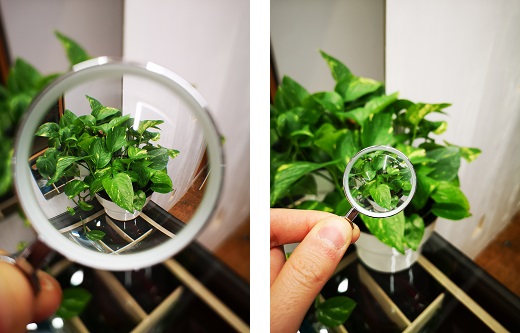
Changing the vertex distance changes the effective power of the lenses.
Specifically, increasing the vertex distance adds more positive power to the lenses, and reducing the vertex distance adds more negative power to the lenses.
However, as you well know, contact lenses have no vertex distance. They sit directly on the eyes. This means that going from glasses to contact lenses reduces the vertex distance, which adds more negative power to the lenses. That is why the power has to be adjusted.
Failure to properly account for the change in vertex distance between glasses and contact lenses can cause your prescription to be off. Specifically, if you are nearsighted your contact lenses could be too strong. If you are farsighted your contact lenses may not be strong enough. In both situations this can cause your vision to be blurry as well as place undue strain on your eyes.
Basic Glasses to Contact Lens Conversion Charts
Basic glasses to contact lens conversion charts take a single glasses lens power and show you the converted value for contact lenses. Typically, they show the results for both negative and positive power on either side of the chart.
Here is a classic example that I made when I started Contacts Advice:
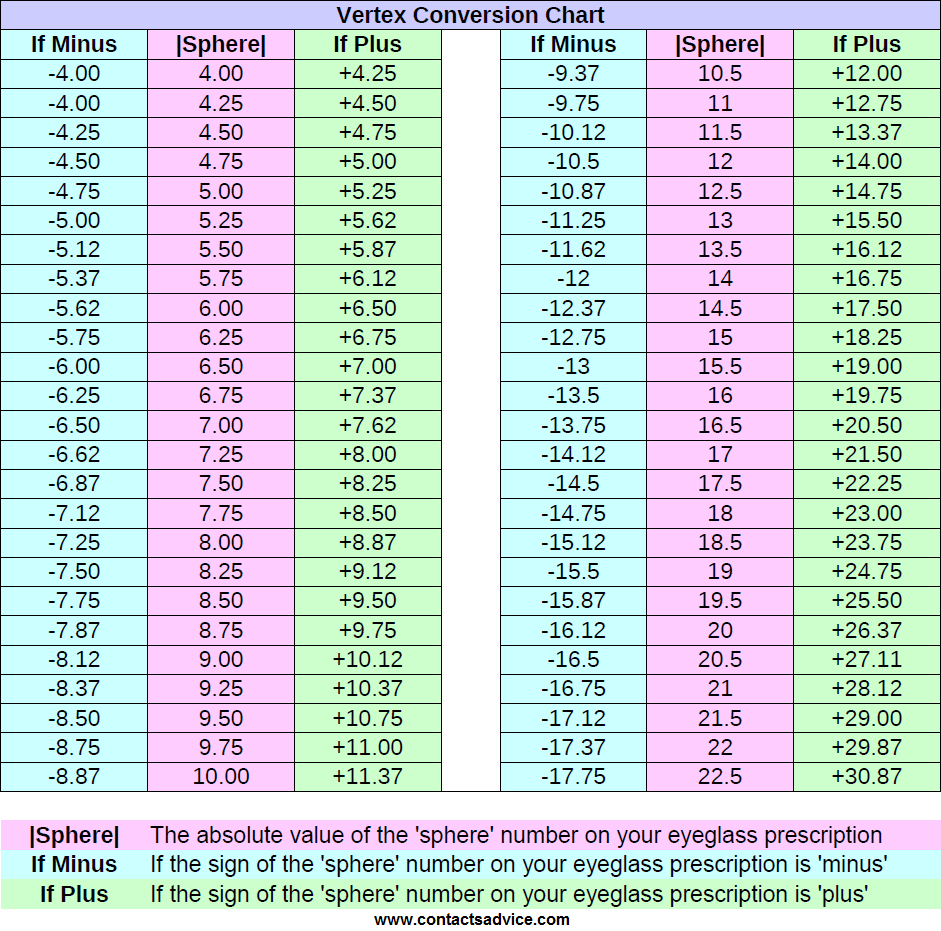
In charts like these, the middle columns (the pink column in the chart above) is the power the corresponds to the glasses. The columns on either side (blue and green) represent the equivalent power of contact lenses. Generally, for negative powers the result is on the left and for positive powers the result is on the right.
To use the chart:
- Identify the right eye’s ‘Sphere’ number on the glasses prescription (note whether it is positive or negative) and find it in the pink column
- If the number is negative, the equivalent contact lens power is the number immediately to the left
- If the number is positive, the equivalent contact lens power is the number immediately to the right
- Repeat this process for the left eye
Example:
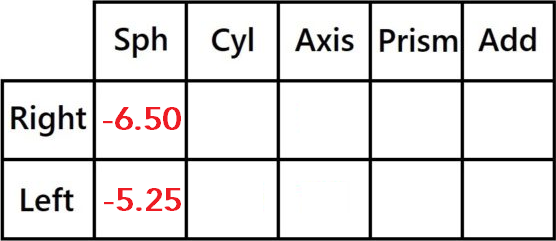
Let’s go through the steps:
Right Eye
-
- Identify the right eye’s ‘Sphere’ number on the glasses prescription (note whether it is positive or negative) and find it in the pink column –> -6.50 (negative)
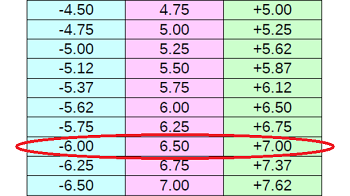
2. If the number is negative, the equivalent contact lens power is the number immediately to the left –> It is negative so we take the number to the left, -5.62
Left Eye
-
- Identify the right eye’s ‘Sphere’ number on the glasses prescription (note whether it is positive or negative) and find it in the pink column –> -5.25 (negative)
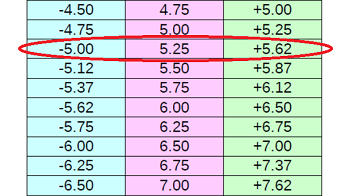
2. If the number is negative, the equivalent contact lens power is the number immediately to the left –> It is negative so we take the number to the left, -5.00
Charts like these work quite well when a prescription for glasses only has 1 number on it for each eye, such as in the example above. But what if a prescription for glasses has a ‘Sphere’ and a ‘Cylinder’ power?
That’s where the usefulness of these charts breaks down. It is still possible to use a basic vertex chart like the one above for prescriptions that have a ‘Sphere’ and ‘Cylinder’ number but the process becomes quite a bit more complicated.
I have described the entire process in a 4-part tutorial series that you can read here:
Converting a Glasses Prescription To Contact Lenses TUTORIAL – Part 1
Converting a Glasses Prescription To Contact Lenses TUTORIAL – Part 2
Converting a Glasses Prescription To Contact Lenses TUTORIAL – Part 3
Converting a Glasses Prescription To Contact Lenses TUTORIAL – Part 4
However, if you like to keep is simple I have just the thing for you!
Sphere AND Cylinder Glasses to Contacts Conversion Charts
Previously, charts did not exist to convert both the ‘Sphere’ and ‘Cylinder’ number at the same time. That is because there are so many different ‘Sphere’ and ‘Cylinder’ combinations that it would produce an enormous chart.
However, I found that if you break it down into sections and organize the charts logically, it is possible to do. And I have done just that.
When making Contacts Advice’s Sphere and Cylinder Glasses to Contacts Conversion Charts I created a different chart of every possible ‘Sphere’ value. Each each chart shows the conversion for specific combination of ‘Sphere’ and ‘Cylinder’ listed.
For example here is a chart for the ‘Sphere’ of -5.00. It shows all the possible combinations of ‘Sphere’ and ‘Cylinder’ up to a maximum ‘Cylinder’ of -3.25.
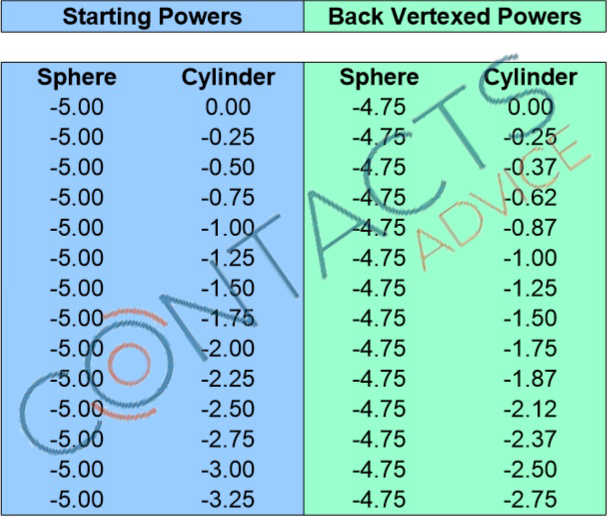
Now say you were interested in converting the following numbers:

You would look up the combinations -5.00 ‘Sphere’ -2.00 ‘Cylinder’ and -5.00 ‘Sphere’ -3.00 ‘Cylinder’ on the blue side of the chart, and the corresponding rows on the green side would be the converted values.

It’s that easy! No power cross diagrams, no messy formulas, no complicated calculations.
Here they all are for your convenience. Feel free to print them for quick reference in your clinic or bookmark this page.
 |
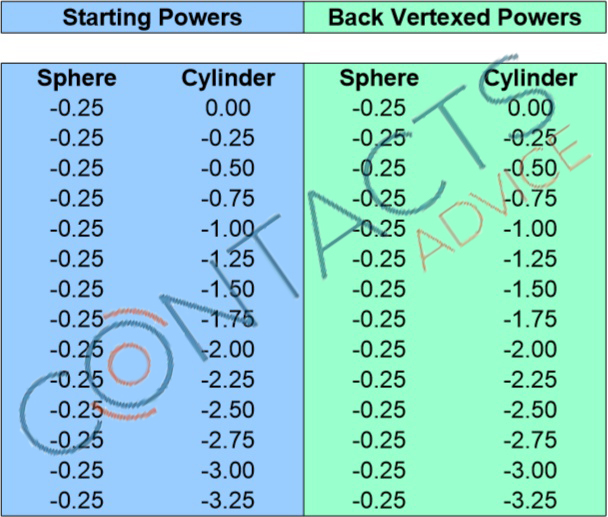 |
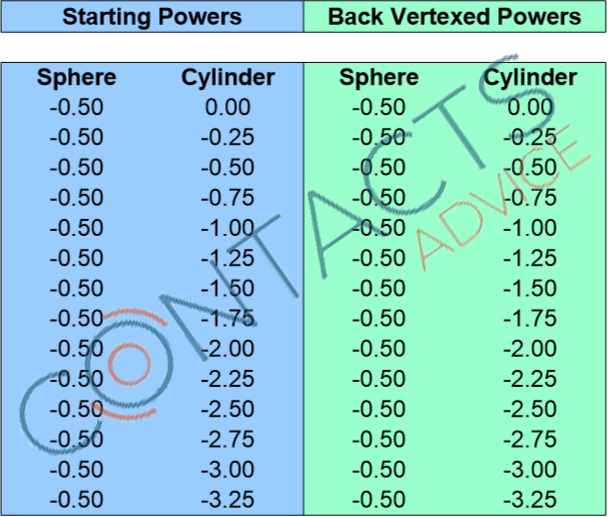 |
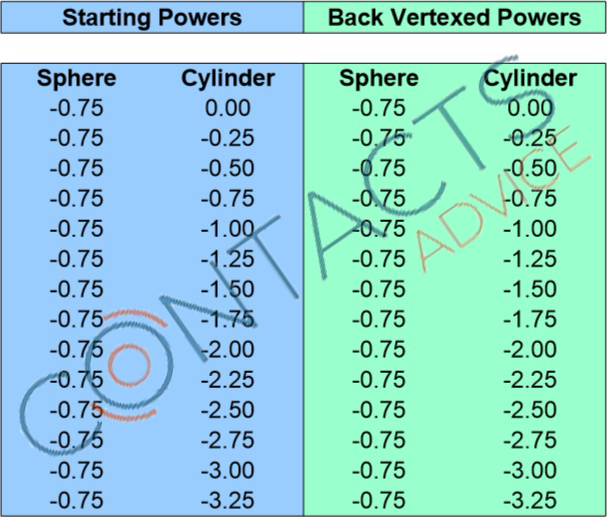 |
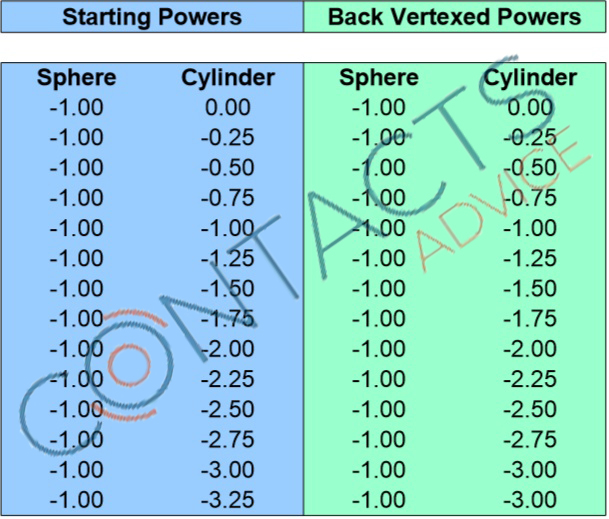 |
 |
 |
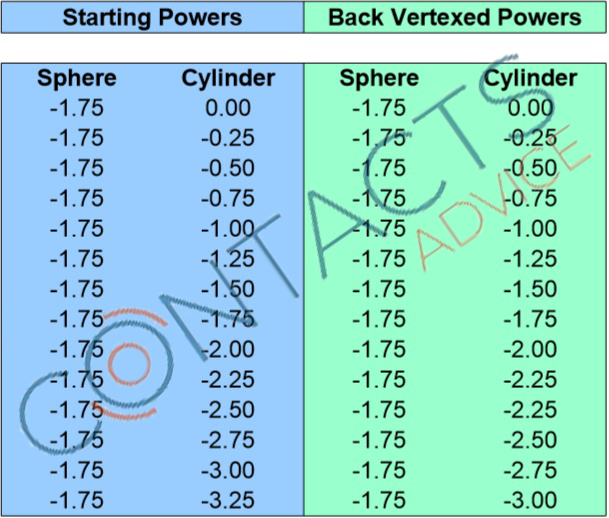 |
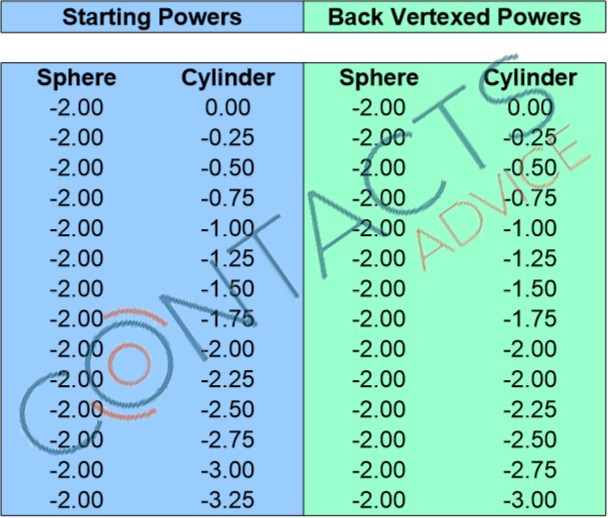 |
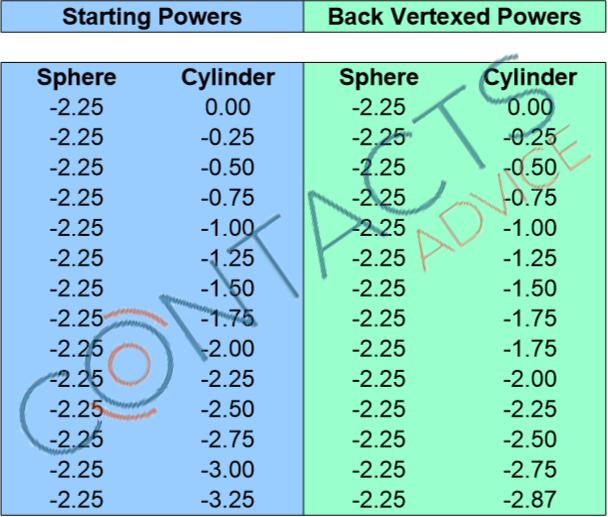 |
 |
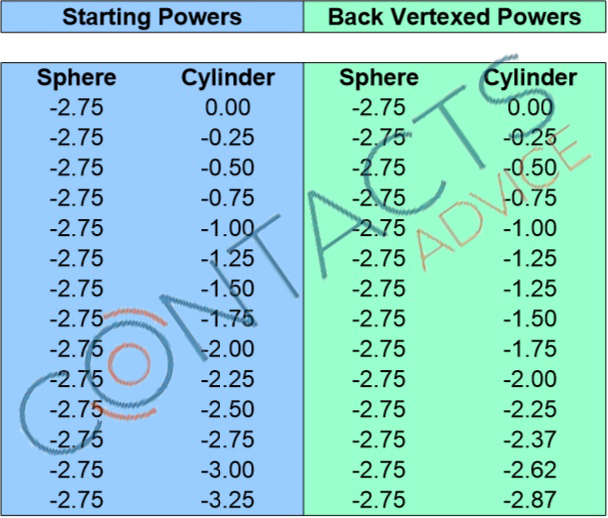 |
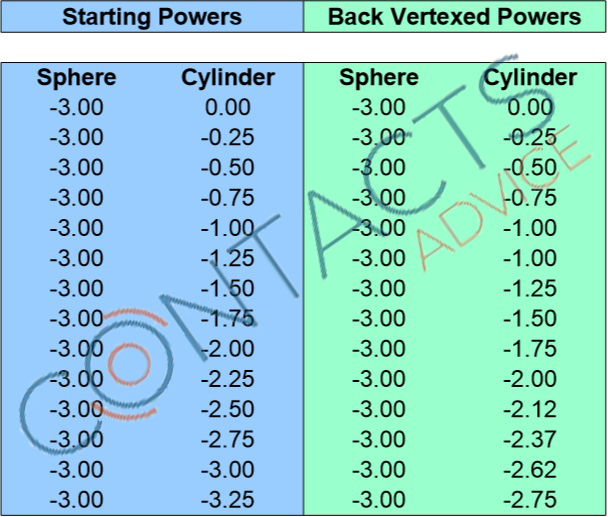 |
 |
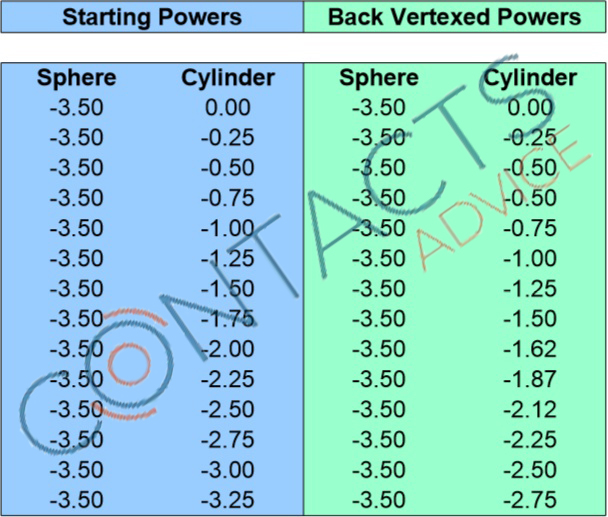 |
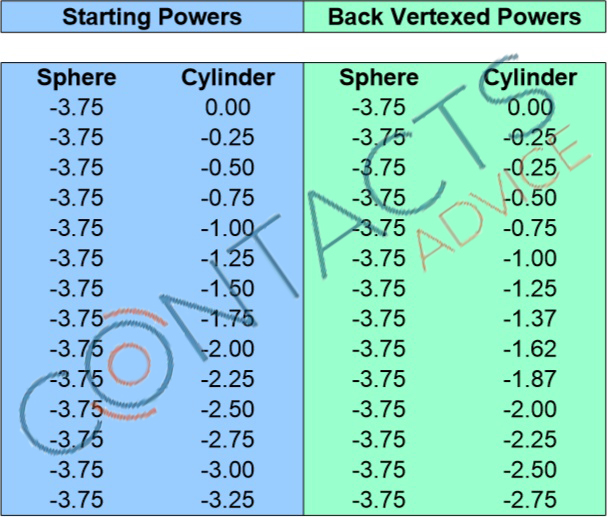 |
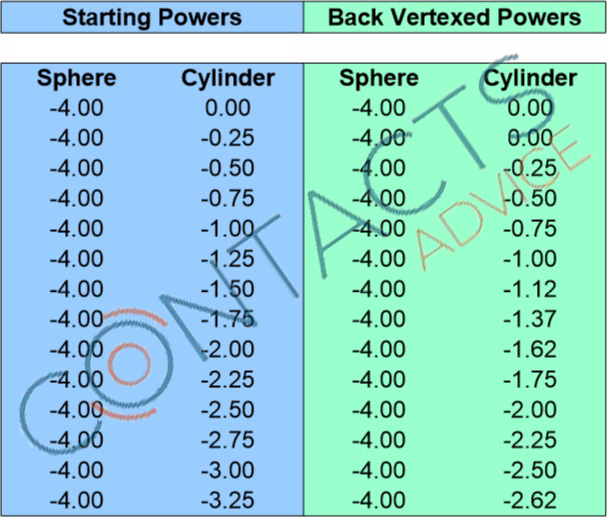 |
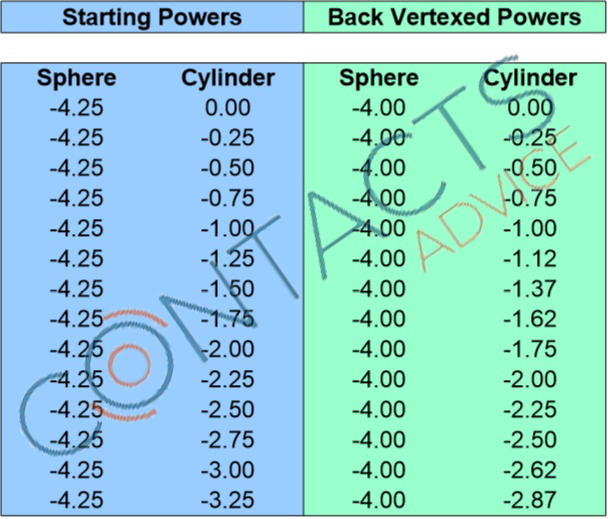 |
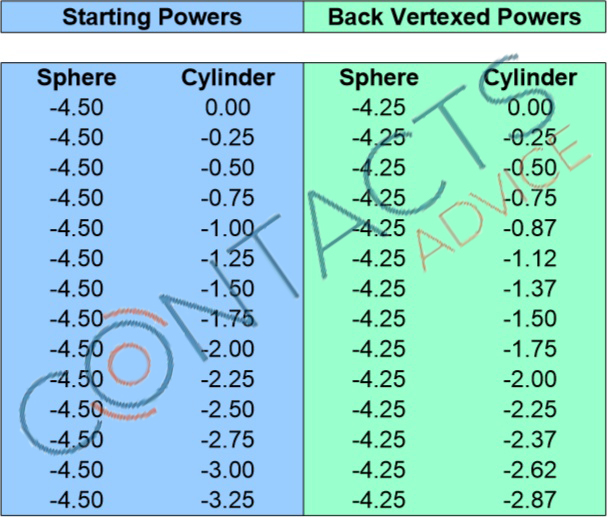 |
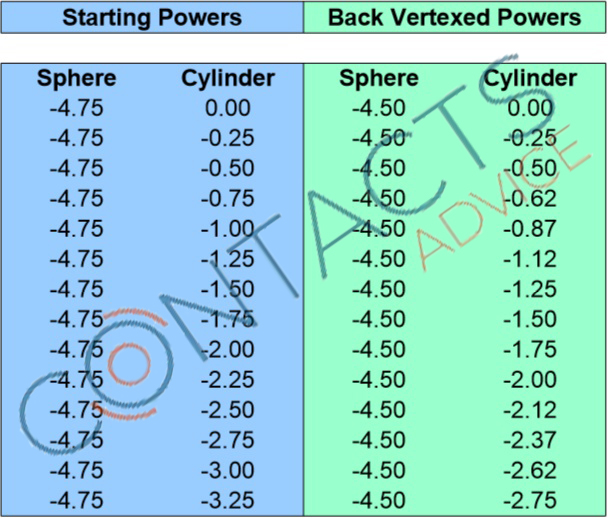 |
 |
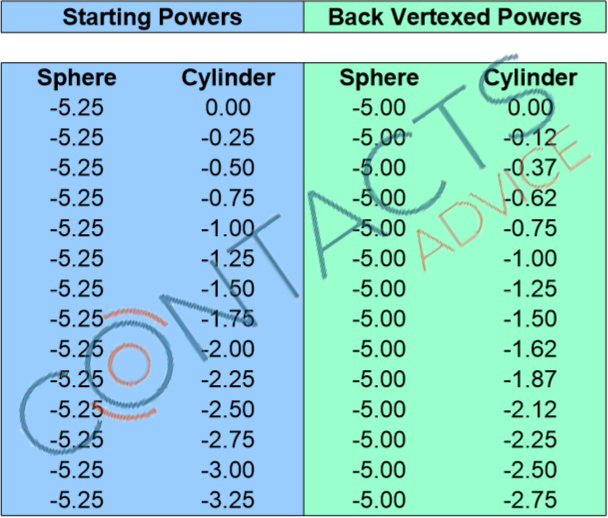 |
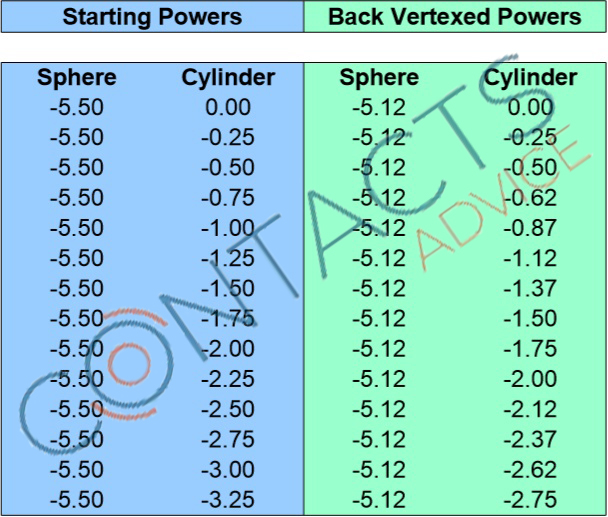 |
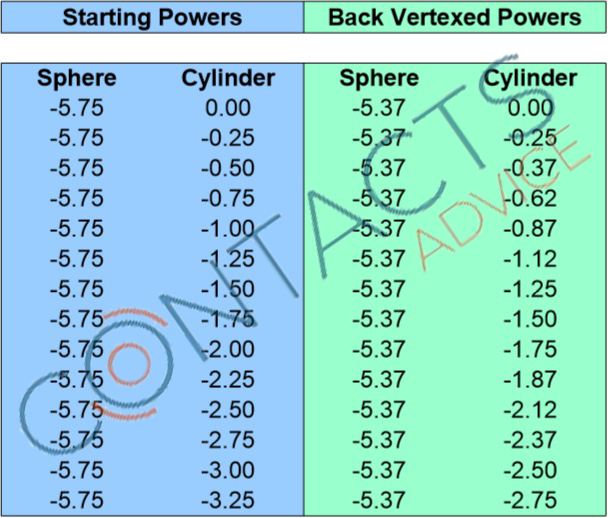 |
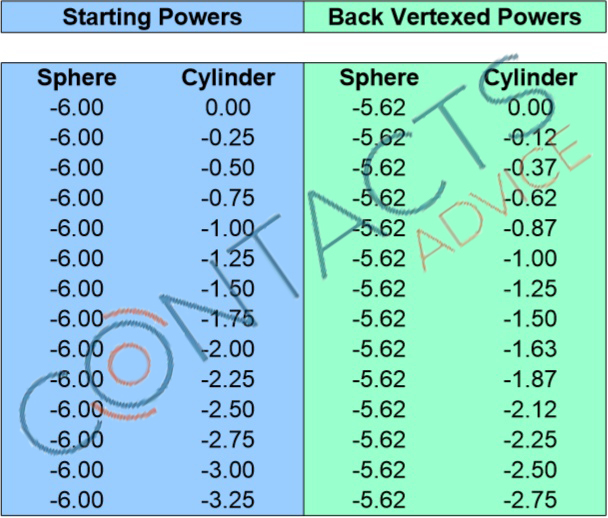 |
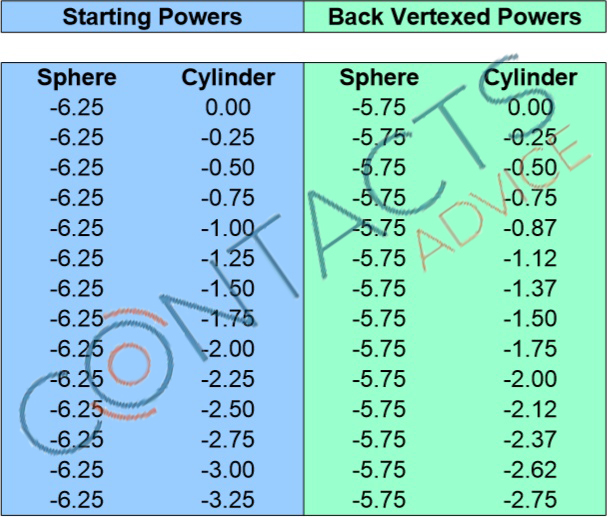 |
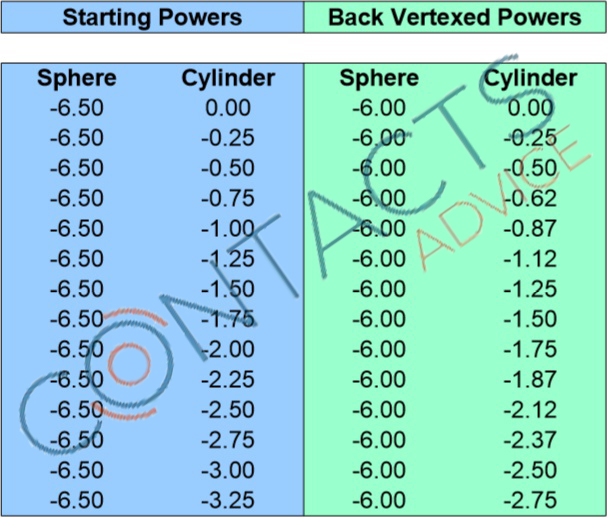 |
 |
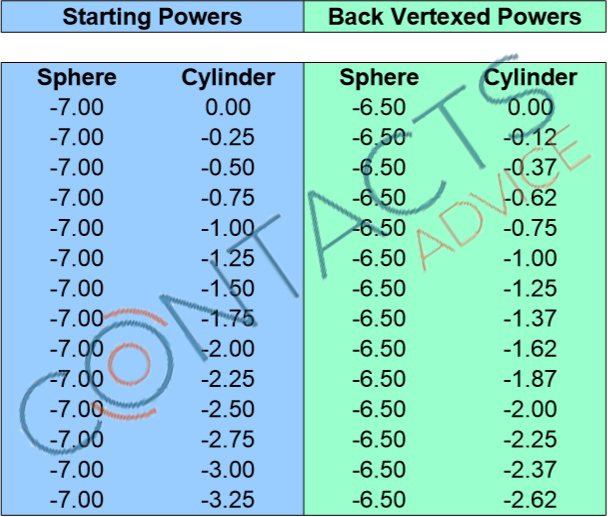 |
 |
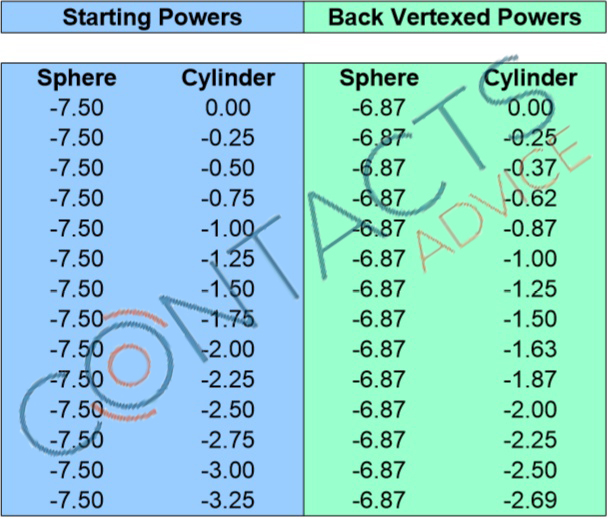 |
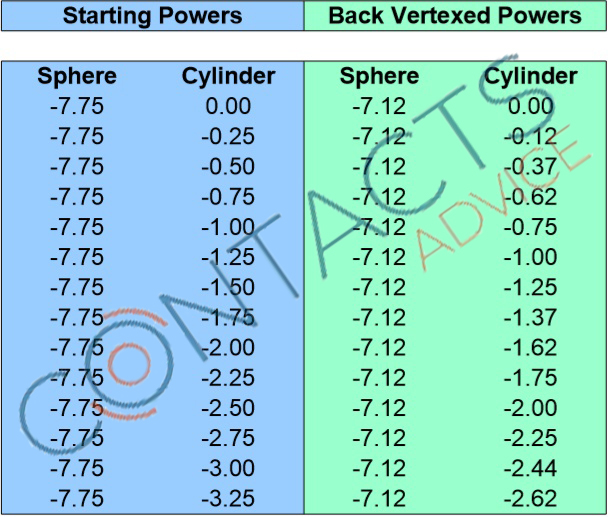 |

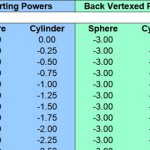
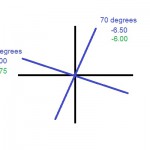
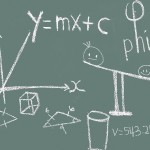
2 Responses
David
Hi Julie,
The conversion for my astigmatic OD comes to -6.25, -.87. It seems the major lens manufacturers offer only -6.00 or -6.50 sphere, and -.75 or -1.00 cylinder. In your opinion, is it better to go higher or lower if you’re stuck in the middle?
Thank you for your work, this site is a great resource!
Julie
Hi David, that’s a great question, and it’s a difficult one. Based on this information alone it would be difficult to say which is right, even for an experienced contact lens fitter, or even an optometrist.
Generally speaking, if you use glasses or contact lenses that are too strong (when you’re nearsighted) it might place a little more strain on the focusing muscles in your eyes but the vision would be clear. On the other hand, if the glasses or contact lenses are not strong enough, the muscles would be under less train but the vision may be a little blurry.
In practice if this situation comes up, it would be common for the practitioner to start with the lower power, measure the vision with the lower power and then see if going to the next step up makes any significant difference in the vision. If it does help with the vision they might bump you to the higher one. If not, they would keep you in the lower one.
It’s also worth mentioning two other factors that could influence what numbers are best for you:
1. Sometimes, a certain power in one brand does not always behave the same power as in a different brand. So say if someone is a -4.00 in their glasses, in brand A the best power for them might be -4.00, and in a different brand it might be -3.75.
2. The higher the glasses prescription, the less reliable the conversion formula becomes.
Both of these just mean that in order to find the best power it helps to do a test run first, ideally under the supervision on an eye doctor.
Some additional considerations would also be your age and what you spend the bulk of your time in contact lenses doing i.e., all day at a computer, or just for sports, etc.
This information is provided as an information resource only (i.e., this is not medical advice) and is not to be used or relied on for any diagnostic or treatment purposes. This information does not create any patient-doctor relationship, and should not be used as a substitute for professional diagnosis and treatment.